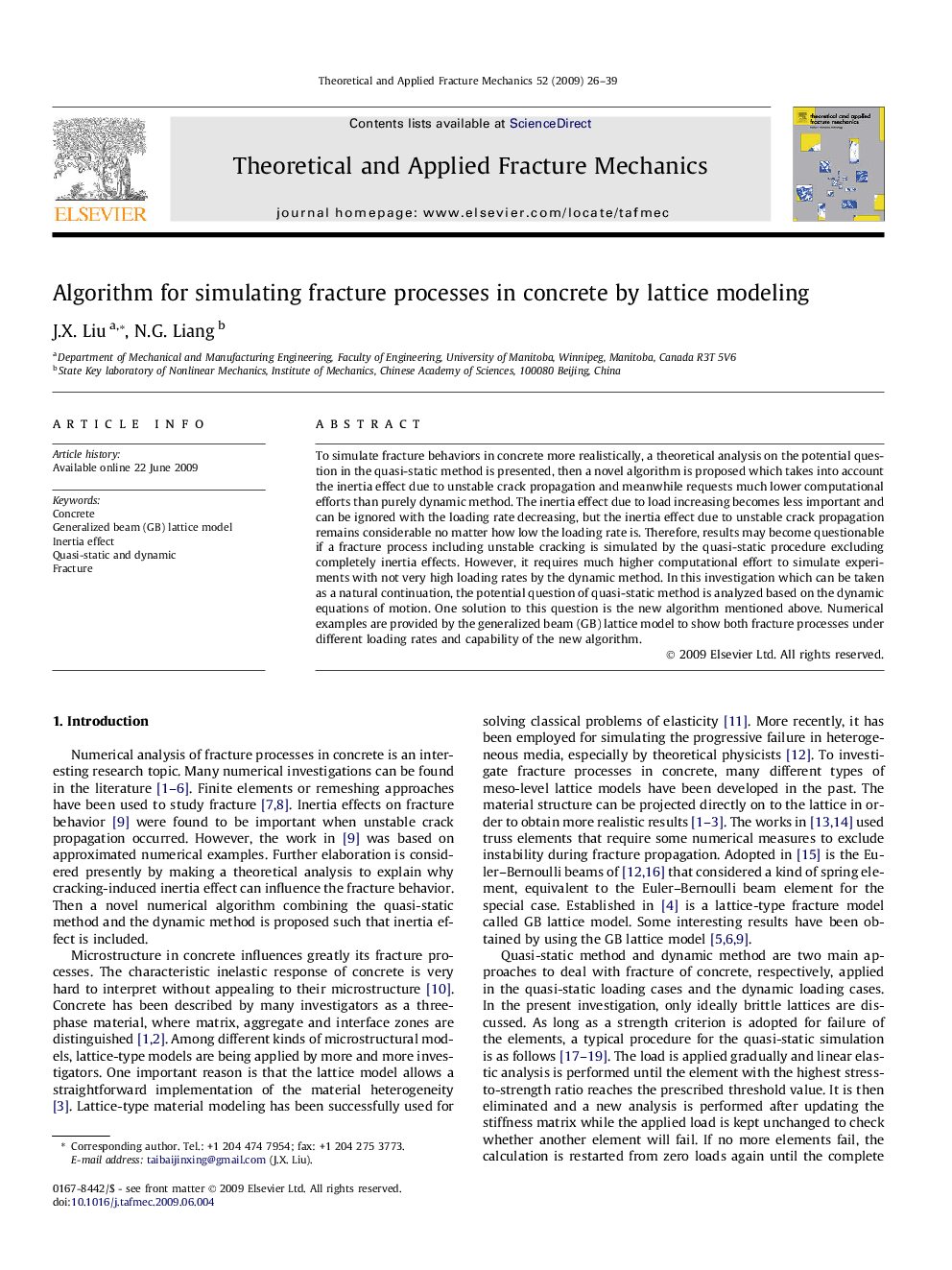| Article ID | Journal | Published Year | Pages | File Type |
|---|---|---|---|---|
| 804977 | Theoretical and Applied Fracture Mechanics | 2009 | 14 Pages |
To simulate fracture behaviors in concrete more realistically, a theoretical analysis on the potential question in the quasi-static method is presented, then a novel algorithm is proposed which takes into account the inertia effect due to unstable crack propagation and meanwhile requests much lower computational efforts than purely dynamic method. The inertia effect due to load increasing becomes less important and can be ignored with the loading rate decreasing, but the inertia effect due to unstable crack propagation remains considerable no matter how low the loading rate is. Therefore, results may become questionable if a fracture process including unstable cracking is simulated by the quasi-static procedure excluding completely inertia effects. However, it requires much higher computational effort to simulate experiments with not very high loading rates by the dynamic method. In this investigation which can be taken as a natural continuation, the potential question of quasi-static method is analyzed based on the dynamic equations of motion. One solution to this question is the new algorithm mentioned above. Numerical examples are provided by the generalized beam (GB) lattice model to show both fracture processes under different loading rates and capability of the new algorithm.
